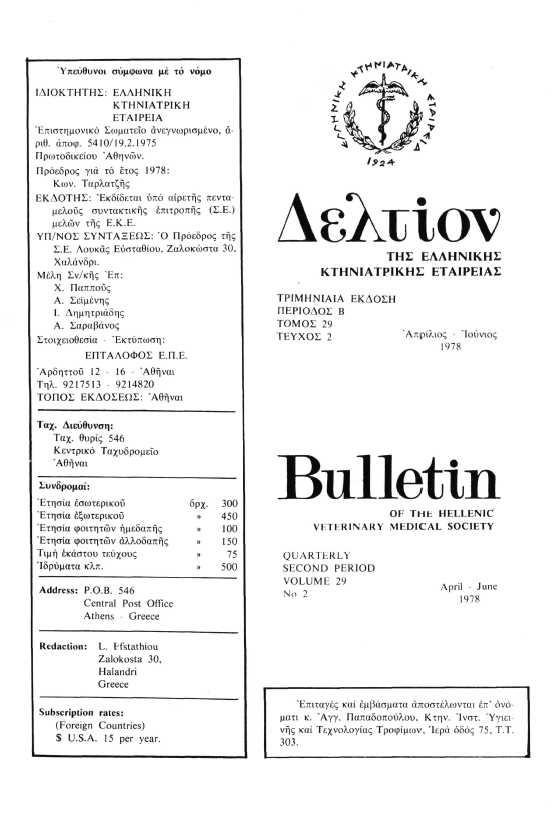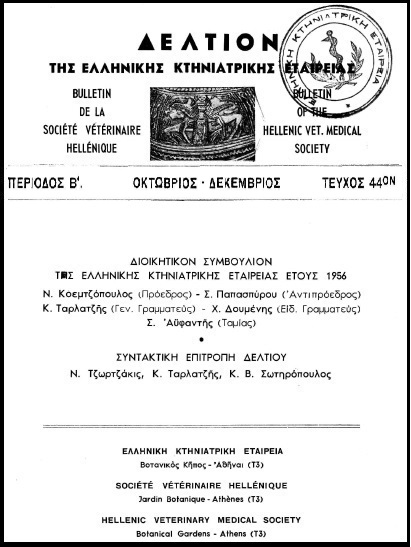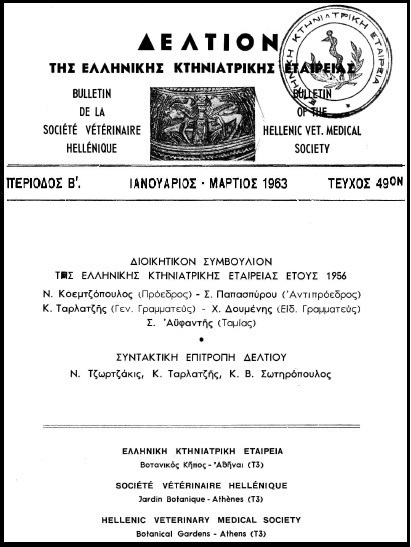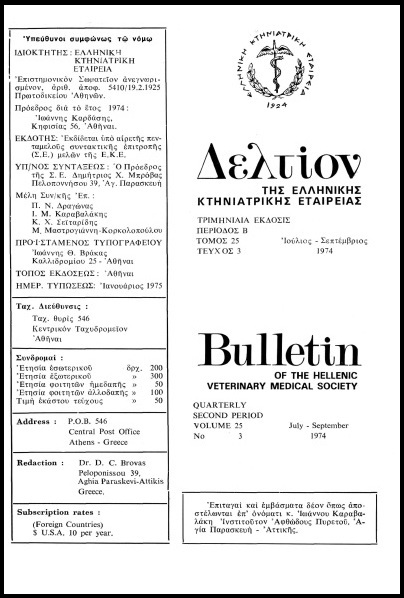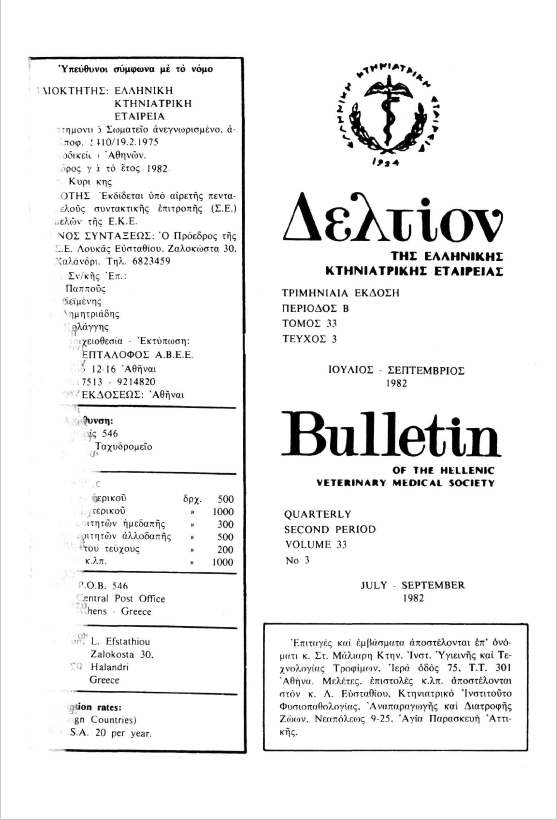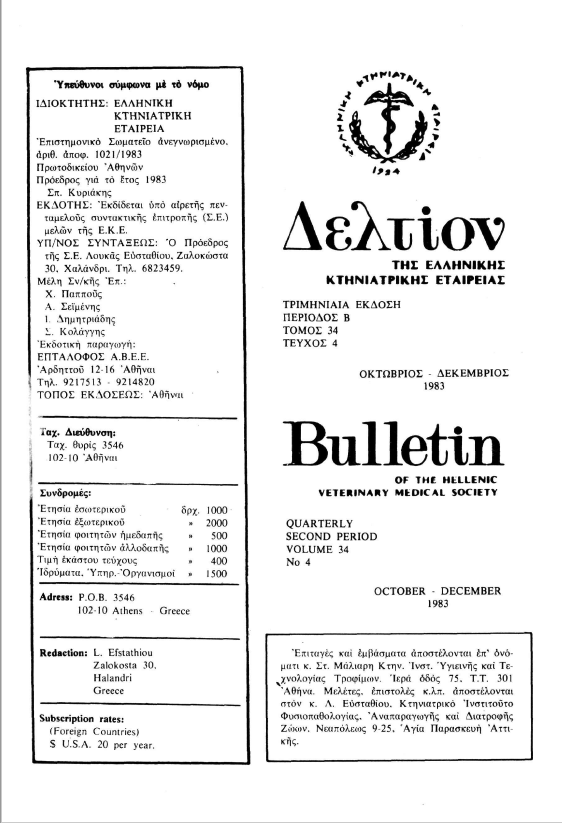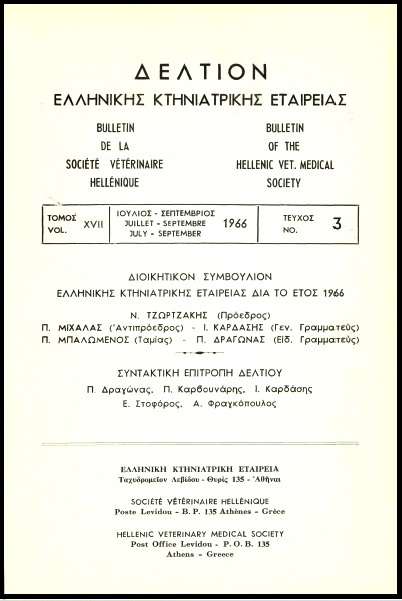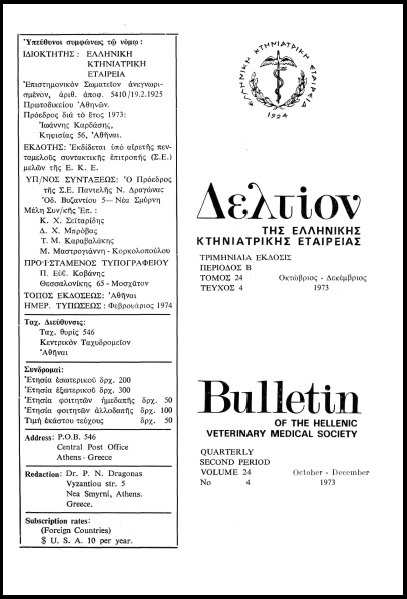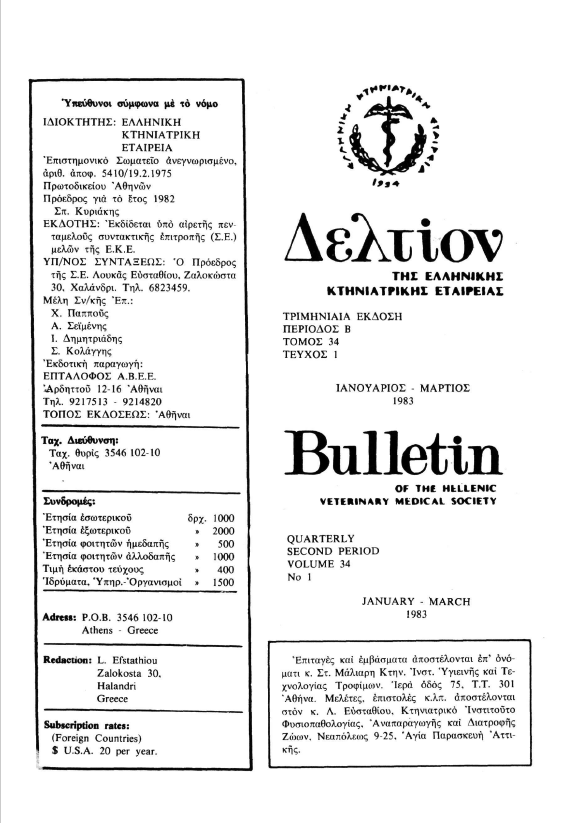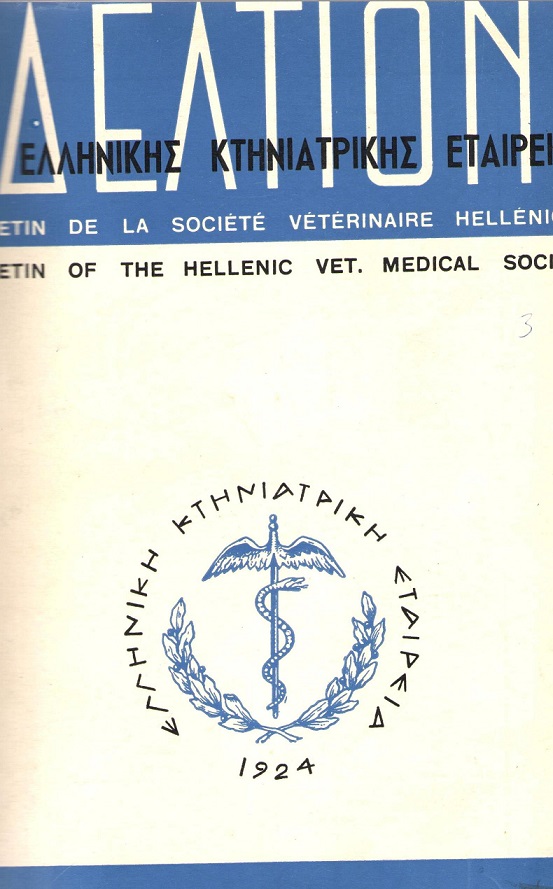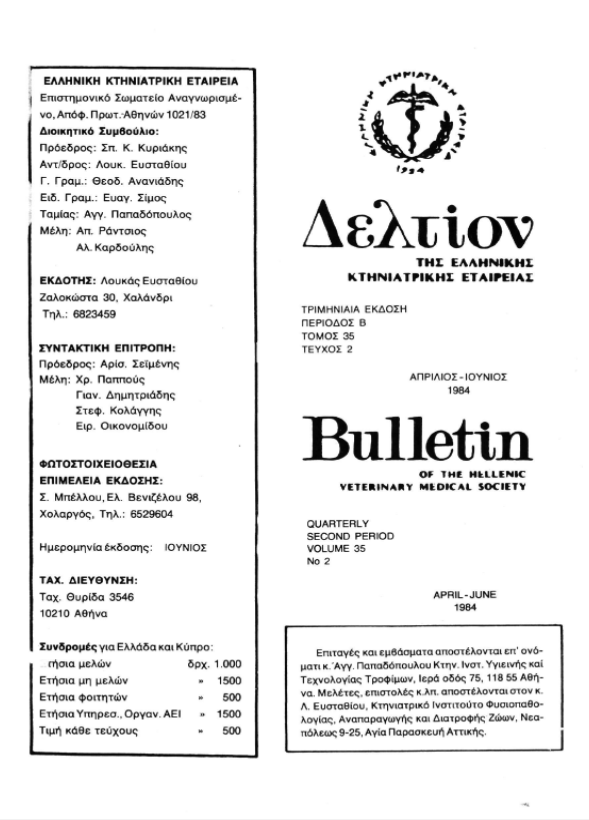Study upon the efficacy of apramycin water soluble in weaned piglets suffering from colibacillosis
Abstract
Apramycin, a new aminocyclitol antibiotic, has been evaluated for the treatment and prevention of naturally occuring colibacillosis and oedema disease in post weaned pigs. Apramycin, in the form of a soluble powder, was administered in the drinking water at concentrations of 200 and 300 mg/1 for 3 days to dieased pigs weaned at 21 days of age, and for 7 days to pigs weaned at 35 days of age. In the latter, its efficacy was compared with ampicillin (water soluble) given at 200 mg/1 drinking water for 7 days. In the present study a total of 801 pigs were invIved. Apramycin, at both concentrations, was effective in treatment of colibacillosis in pigs weaned at 21 days of age, because (1) mortality was significantly (P < 0.001) reduced (24.14% for the nonmedicated groups compared to 1.16 and 1.12% for the apramycin concentrations of 200 and 300 mg/1 respectively), (2) diarrhoea receded in all pigs during and shortly after medication and so did the disease symptoms, and (3) average daily liveweight gain was significantly (P < 0.001) increased in the medicated groups by 133.6 and 109.6% for the 200 and 300 mg apramycin/1 respectively, as compared to the nonmedicated groups. During the course of the above trial and in an outbreak of oedema disease (pigs weaned at 21 days of age) a mortality rate of 22.73% was recorded in the nonmedicated groups and 2.59 and 3.51% in the groups medicated with apramycin at concentrations of 200 and 300 mg/1. Re spectively. The mortality rate was significantly lower (P < 0.001) for both apramycin treatments, as compared to the nonmedicated groups. The medicated groups showed a more rapid return to normal health than the controls. The experimentation of apramycin on oedema disease was considered as a seperate trial. In colibacillosis of pigs weaned at 35 days of age, diarrhoea receded during medication and pigs showed a more rapid return to normal health in the apramycin groups than the ampicillin treated groups. However, the concentration of 200 mg apramycine 1 was more effective in increasing the average dvaly liveweight gain by 5.4% and improving the feed conversion ratio of pigs by 6.4% as compared to both the concentration of 300 mg apramycin/1 and 200 mg ampicil lin/1 _ The mortality rate recorded was 5.20 and 1.12% for the apramycin treatments (200 and 300 mg/1 respectively) and 6.17% for the ampicillin treated groups. Mortality, bodyweight gai ned and feed conversion of the pigs medicated with apramycin were not significantly (P > 0.05) different from those responses of the ampicillin medicated pigs. From different strains of E. coli isolated from pigs (weaned at 35 days of age) with colibacillosis, the following serotypes have been found: 0149: K91, K88 a,c and 08: K87, K88 a,c.
Article Details
- How to Cite
-
ΣΤΟΦΟΡΟΣ Ε., ΚΥΡΙΑΚΗΣ Σ., ΑΝΔΡΕΩΤΗΣ Ι., ΤΣΑΛΤΑΣ Κ., ΣΙΜΟΣ Ε., & ΣΤΟΫΤΣΙΟΥ Κ. (2019). Study upon the efficacy of apramycin water soluble in weaned piglets suffering from colibacillosis. Journal of the Hellenic Veterinary Medical Society, 29(2), 105–119. https://doi.org/10.12681/jhvms.21345
- Issue
- Vol. 29 No. 2 (1978)
- Section
- Articles

This work is licensed under a Creative Commons Attribution-NonCommercial 4.0 International License.
Authors who publish with this journal agree to the following terms:
· Authors retain copyright and grant the journal right of first publication with the work simultaneously licensed under a Creative Commons Attribution Non-Commercial License that allows others to share the work with an acknowledgement of the work's authorship and initial publication in this journal.
· Authors are able to enter into separate, additional contractual arrangements for the non-exclusive distribution of the journal's published version of the work (e.g. post it to an institutional repository or publish it in a book), with an acknowledgement of its initial publication in this journal.
· Authors are permitted and encouraged to post their work online (preferably in institutional repositories or on their website) prior to and during the submission process, as it can lead to productive exchanges, as well as earlier and greater citation of published work.

